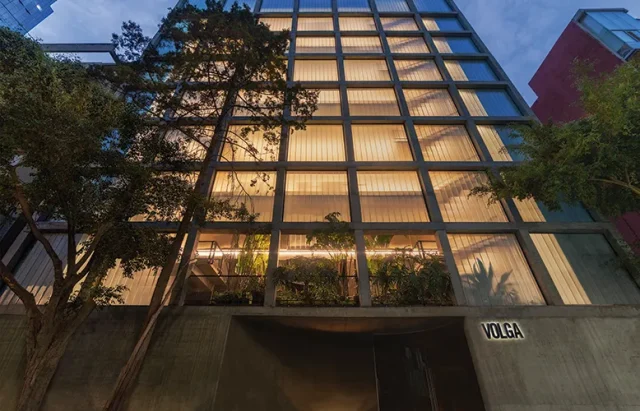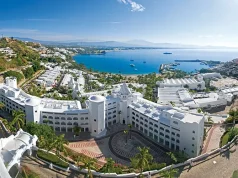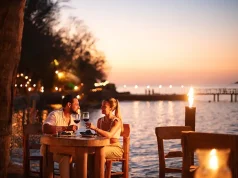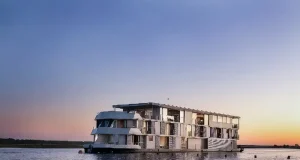
The largest city in North America is alive. It dances and it drinks, and it holds within it centuries of history. It was only relatively recently that Mexico City’s artistic and historic reputation captured the American travelers’ collective imagination, and the city became a popular destination for expats and visitors looking to immerse themselves in architecture, history, style…and the best street food in the world.
To spend 72 hours in Mexico City is a challenge. Not, in fact, for lack of things to do, but for a lack of time to do them. Mexico City boasts nine of the World’s 50 Best Bars, from underground speakeasies to artisanal mezcalerias. Bartenders consider Mexico City a proving ground for new cocktail concepts, with an audience of discerning gastronomists every night. The city is also in the midst of a culinary revival. Elevated and Michelin starred restaurants are making headlines for their fusion fare that pairs Mexican with any combination of Japanese, Korean, Mediterranean, or myriad other cuisines. Enrique Olvera’s Pujol elevates Mexican food to a high art form, while staying true to its roots in local, sustainable ingredients.
Parque Chapultepec, at one end of the most iconic avenue in Latin America, houses the opulent Castillo Chapultepec, the former royal residence, with views of the bustling downtown and leafy Condesa neighborhood from its tiled terraces. While there, explore the nearby National Museum of Anthropology, with a life-size scale model of a Mayan pyramid and exhibits about the Indigenous people that once thrived in the Riviera Maya. Indeed, visitors can expect to visit museums of all ilk, as Mexico City boasts the second most museums of any city worldwide.
In the historic center Zocalo of Mexio City, where the first female and first Jewish president of Mexico recently celebrated her election, the grand metropolitan cathedral is flanked by adorned government buildings. One nineteenth and early-twentieth century goal of Mexico City was to be the “Paris of the Americas;” grand architecture and rolling lanes remain as artifacts of this aim. The towering odes to Catholicism are only outdone in their grand tastes by the street food tours operated by Club Tengo Hambre. Local guides, including a young gastronomy journalist by the name of Fernanda, take visitors down winding lanes, weaving through foot and vehicle traffic, to the food stalls and stands serving up tacos about which Anthony Bourdain called, “the best tortillas” he’d ever had. Another Bourdainism from Mexico City: “the tripe is the way to go.”
Just down the road from Mexico City are the floating gardens and the ancient canals of Xochimilco. Though the gardens used to serve as trade canals for Indigenous people, their primary use in modern times is as a lazy afternoon itinerary item. Grab a few friends, a few cervezas, and head out on the typical Trajinera, or wooden, pole-operated boat, to the legendary Isla de las Muñecas. At the north end of the canals is a sole island completely inhabited by thousands of abandoned dolls in various states of decay, a chilling if not intriguing sight, even in daylight – and just off the beaten path enough to keep visitors to a minimum.
An incredible gastronomic scene, temperate late summer weather, and a burgeoning local nightlife culture make the largest city in North America a perfect long weekend getaway for an urban escape. It’s also a cinch to get to, with direct flights from 20 US states, including from hubs Los Angeles, Houston, Chicago, NY, Miami, and far more.
It was in the Mexico City neighborhood of Cuauhtémoc that Che Guevara met Fidel Castro and plotted to overthrow the Cuban dictator Bautista. For history buffs looking to stay in the historic Cuauhtémoc neighborhood – and for those who just want to be in the center of the action – the uber-cool new Hotel Volga is just one block from the bustle of the Paseo de la Reforma.
An architecturally striking 2023 addition to the Mexico City hospitality scene, the luxury boutique hotel is designed by the same architects behind Pujol (Chef Enrique Olvera’s acclaimed Mexico City restaurant and perennial 50 Best Lister), a 49-room masterpiece. Exposed concrete, a semi-circle atrium, and a rooftop pool with city views adorn the hotel. Volga’s concept restaurant Elora, a project by Japanese-Mexican restaurateur Edo Kobayashi, is making waves in the neighborhood, as is Volga’s ultra exclusive subterranean sound room, MINOS, serving innovative cocktails and light bites in an alluring and private music lounge.





